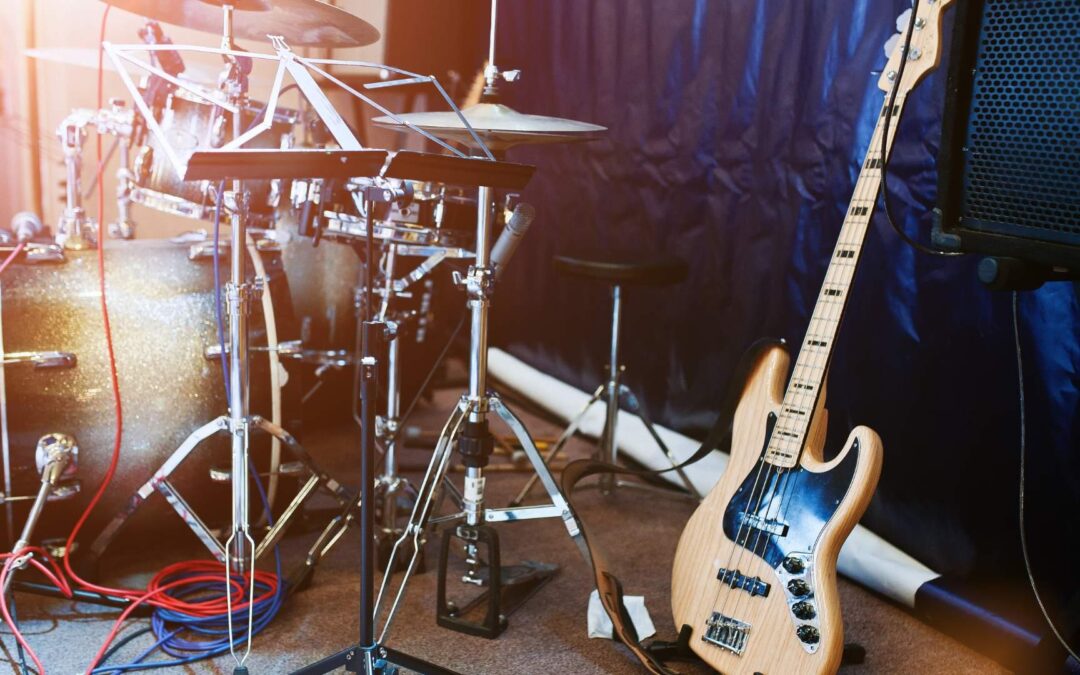In the vast expanse of musical composition, the unique relationship between drums and bass forms the backbone of countless songs across various genres. Often referred to as the rhythm section, these two instruments work in harmony to provide not only the tempo but also the structural foundation that supports every other element of a track. Musicians Institute’s Music Artist Drum Program and Bass Program, students learn to master these instruments, understanding their critical roles in music creation.
The Role of Drums: Setting the Pace
Drums are not merely percussion instruments; they are the metronomes of music. Each beat on a drum kit can significantly impact a song’s energy and emotion. The drummer controls the tempo and dynamically shifts the intensity of the music to match the narrative of the song. For example, a slow, steady beat can evoke a sense of calm or sadness, while a fast-paced rhythm might enhance feelings of excitement or urgency. This control makes the drum an essential tool for emotional expression within music.
The Bass: Underpinning the Harmony
While the drums provide the beat, the bass guitar offers a melodic anchor, grounding the harmonic structure of a song. The bass plays a crucial role in bridging the gap between the rhythmic percussion provided by the drums and the melodic contributions of the lead instruments and vocals. By playing notes that emphasize the tonal foundation of the music, the bassist helps to reinforce the chord progressions that drive the song. This not only supports the melody but also enhances the overall cohesiveness of the performance.
Synchronization: The Drum and Bass Interaction
The magic happens in the interaction between the drum and bass. This synchronization is vital for the stability of a song. In many genres, such as jazz, rock, and funk, the bass often plays a pattern that complements the rhythm laid down by the drums. This can be seen in the form of a bassline that mirrors or responds to the drum’s kick and snare pattern—a technique that helps to lock in the groove.

Blog Post
"*" indicates required fields
By submitting this form, I authorize Musicians Institute (MI) to make or allow the placement of calls, emails, and texts to me at the phone number that I have provided, including through the use of automated technology, or a prerecorded or artificial voice. I understand that I am not required to provide my phone number as a condition of purchasing any property, goods, or services. I agree to the terms of MI’s Privacy Policy. MI will not sell or rent your information to third parties, and you may unsubscribe at any time.
The relationship between the drum and bass is akin to a dance, with each instrument taking cues from the other to maintain a steady groove. This interaction ensures that the rest of the band has a solid rhythmic and harmonic foundation to build upon. This synergy is not just about keeping time but also about creating a pocket for the song to reside in, which enhances the feel and the swing of the music.
The Impact on Music Production
In the studio, the drum and bass tracks often lay the groundwork before other elements are added. Understanding how to engineer these tracks can profoundly affect the sound and quality of the recording. Sound engineers and producers at Musicians Institute emphasize the importance of getting the drum and bass right, as they set the tone for the mixing process that follows.
Learning at Musicians Institute
At Musicians Institute, the Music Artist Drum and Bass programs focus on developing these foundational skills. Students are taught to understand the theory behind what makes effective drum and bass lines and to apply these concepts in ensemble settings. The curriculum is designed to foster a deep understanding of how these instruments fit into the broader context of band performances and recordings.
Moreover, Musicians Institute’s hands-on approach provides students with the opportunity to practice with fellow musicians, simulating real-world scenarios. This practical experience is crucial in mastering the art of musical synergy, particularly between the drum and bass. Students learn not only technical skills but also the art of listening to and collaborating with other musicians, which is essential for any successful performance.
Wrapping Up
The drum and bass may not always stand out as the flashiest components in a song, but their role is indispensable. They create the rhythmic and harmonic bedrock upon which songs are built. For anyone aspiring to make their mark in the music industry, mastering these instruments can be a game changer. Musicians Institute provides the perfect platform to hone these skills, ensuring that students not only understand their instruments but also how to integrate them seamlessly into any musical ensemble.
Contact Musicians Institute today to learn more about MI’s Music Artist programs, such as drums or bass programs, and how you can start building your musical foundation today.

